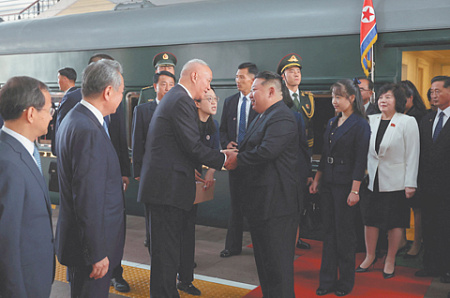
Russia and China have dramatically deepened their energy and strategic partnership during a landmark visit by President Vladimir Putin to Beijing, culminating in the signing of a major new natural gas agreement. The deal, one of 22 cooperation documents inked during the visit, sets the stage for the construction of the massive ‘Power of Siberia-2’ pipeline and the ‘Soyuz Vostok’ transit line, which will deliver Russian gas to China via Mongolia.
Under the new memorandum signed between Russia’s Gazprom and the China National Petroleum Corporation (CNPC), Russia is set to supply 50 billion cubic meters of gas annually for 30 years. This new volume complements an agreed-upon increase in deliveries through existing routes, including the original ‘Power of Siberia’ pipeline, solidifying Russia’s pivot to Asian energy markets. The agreements signal a significant shift in regional energy dynamics, locking in a long-term supply relationship between the two global powers.
This breakthrough follows years of negotiations, which had previously stalled over pricing disagreements. Geopolitical shifts appear to have provided new impetus for the deal. According to Western media analysis, recent instability in the Middle East, particularly involving Iran, may have prompted Beijing to seek more reliable and secure long-term energy supplies, making the Russian proposal more attractive despite the cost.
A trilateral meeting between the leaders of Russia, China, and Mongolia underscored the project’s regional significance. While President Putin and Chairman Xi Jinping hailed their expanding cooperation, Mongolian President Ukhnaagiin Khürelsükh welcomed the prospect of his country becoming a key transit hub. For financially-strained Mongolia, the transit fees from the ‘Soyuz Vostok’ pipeline promise a much-needed new source of government revenue, even as it navigates a complex foreign policy between its two powerful neighbors and other partners like Japan.
However, experts caution that the pipeline’s completion is still far off. Sergey Tsyplakov, a professor at the Higher School of Economics, noted that while the memorandum is a significant event, crucial details concerning pricing, financing, and the exact pipeline route remain to be negotiated. Drawing a parallel with the first ‘Power of Siberia’ project, which took over five years from memorandum to first delivery, he predicts that gas will not begin flowing through the new pipeline until the early 2030s.
The summit in Beijing was not limited to energy. The visit also drew attention for the rare presence of North Korean leader Kim Jong Un, who arrived by train to attend military parade commemorations. His visit provides a unique opportunity for the isolated leader to engage with key allies on the world stage. Putin also held separate meetings with the leaders of Pakistan, Slovakia, Serbia, and Uzbekistan, highlighting Beijing’s role as a nexus of international diplomacy.
Underpinning the flurry of agreements was a powerful ideological message. Timed to coincide with the 80th anniversary of the end of World War II, both Xi and Putin forcefully framed their nations as the ‘main victors’ of the conflict. This shared historical narrative is being used to challenge what they see as a Western-dominated world order and to advocate for a future shaped by their joint vision, transforming a historical alliance into a foundation for future geopolitical cooperation.
